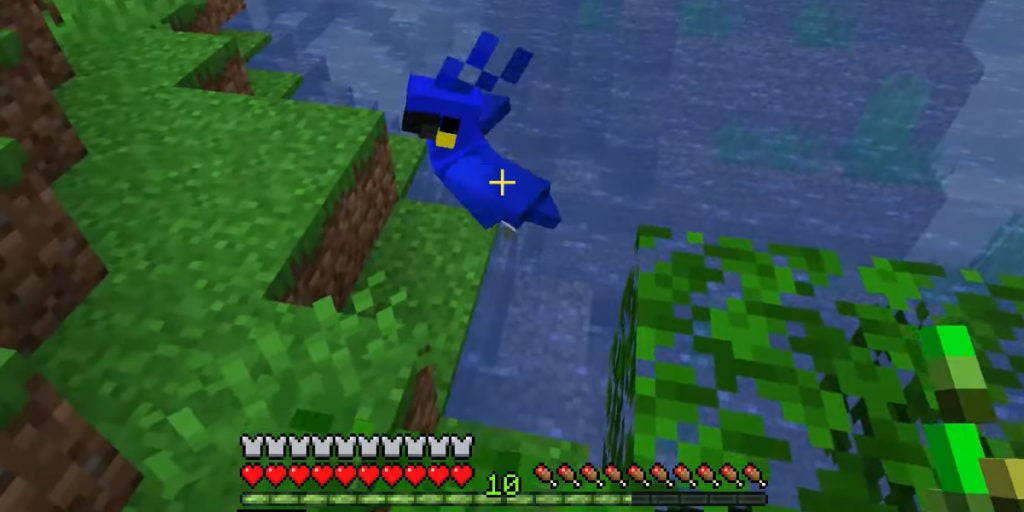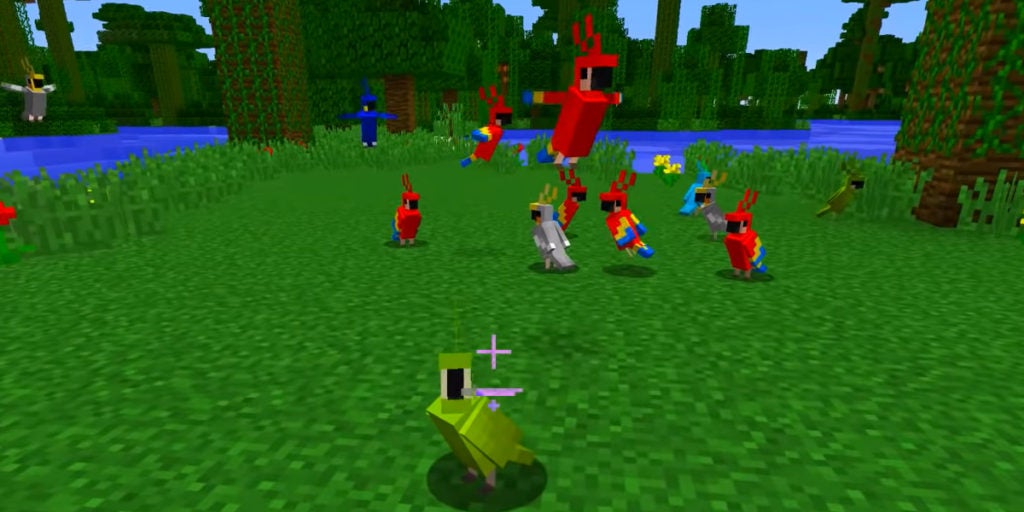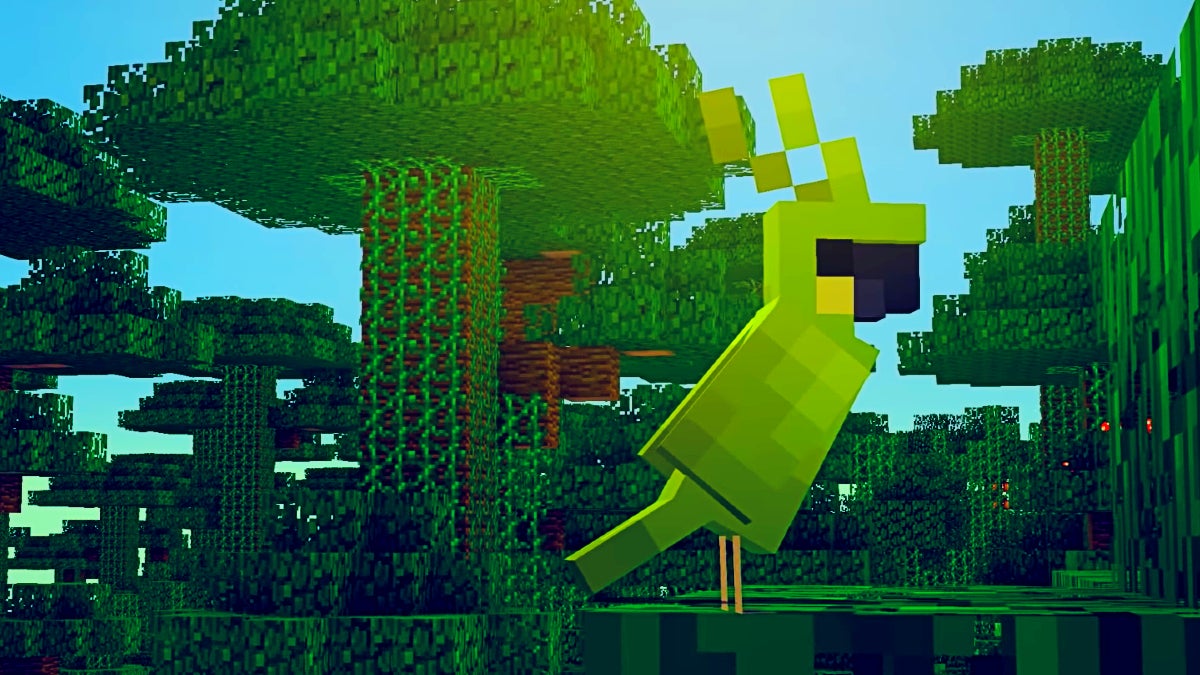There are a few different items that you can use to tame a Parrot in Minecraft. However, you first need to find one, which can be much harder than getting the right food for taming them.
Table Of Contents
What You Need to Tame a Parrot

The only way to tame a Parrot is to feed them some seeds. Any kind of seed will do, with Wheat Seeds, Pumpkin Seeds, Melon Seeds, and Beetroot Seeds all having the same odds of taming a Parrot. Each time you feed 1 seed to a Parrot, there is a 33% chance of them getting tamed. It is worth mentioning that these same taming items can be fed to another type of Minecraft bird (Chickens) to breed them.
Where to Find Parrots
You’ll have to explore Jungle biomes to find wild Parrots, as this is the only place they spawn. The spawning criteria for Parrots are that they can only appear above layer 70 and upon Wood Logs, Leaf blocks, or grassy Dirt blocks. The rate at which the world generates them is quite low, however, so you may need to wander around in a Jungle for a while to find some. Note that when Parrots do spawn, they sometimes do so in pairs.
Where to Get Seeds
To get the aforementioned seeds, you can break or craft their respective crops. For Wheat and Beetroots, you only have to break the crop block. Whereas with Pumpkins and Melons (Melon Slices, to be specific), you have to place them onto a crafting grid to convert them into seed form.
Alternatively, you can sometimes find the seeds themselves in the Chests of various Villages and other locations. It’s also possible to find them in naturally-generated structures like Mineshafts, Dungeons, and more.
What Tamed Parrots Do

Tamed Parrots work similarly to tamed Cats and tamed Wolves. Your Parrot pal will follow you around and will teleport to you when you’re more than 12 blocks away from them. You can also tell them to sit as you do with Cats and Wolves, which will make them stay put. However, there are a bunch of special traits that make Parrots unique and interesting pets.
Perching on Your Shoulders
If you walk through the model of a tamed Parrot, they will appear on your left shoulder. Doing so again with another tamed Parrot will cause it to perch on your right shoulder. In this manner, you can walk around and go about some of your Minecraft business with avian allies always nearby. If you wanted to, you could even download a pirate skin for your character and roleplay as a fierce corsair. Tamed Parrots will also occasionally fly onto one of your shoulders of their own accord; albeit heavily favoring your left shoulder.
A perched Parrot will dismount if you move too drastically. Such movements involve jumping, falling more than half of a block, and other sudden changes of position. Additionally, Parrots will also leave your shoulder if you touch water, fall into lava, sleep in a Bed, or take damage.
Imitating the Sounds of Other Mobs
Your Parrot will frequently mimic the sounds of nearby mobs. Parrots can detect mobs up to 20 blocks away to imitate, and your Parrot will often look in the direction of the mob they are copying. When a Parrot mimics the sound of another mob, it will sound mostly the same, just higher pitch. This can be a great way to detect certain kinds of creatures while hunting for them. Furthermore, it can even be used defensively to be alerted to the presence of hostile mobs.
Dancing
If your Parrot is within 3 blocks of a Jukebox that is playing a Music Disc, it will begin to dance. Their happy little movements will involve them wiggling back and forth on the spot. While this is not the most useful function, you can’t deny that it’s entertaining and cute.


